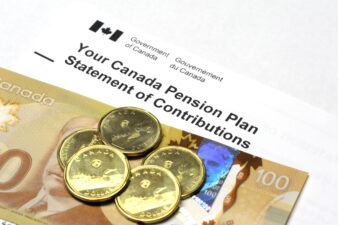The Canada Pension Plan (CPP) is a great way for Canadians to put cash away for retirement without even thinking about it. In most cases, CPP is taken off your paycheque. Therefore, when it comes time to retire, you can start claiming your cash right away!
But should you? And when you do, will it even be enough? In short, no, it won’t. This is why today we’re going to look at some easy methods for future retirees to make the most of their CPP income based on how much they’ll need to retire.
How much do you need?
Obviously, every situation is different when it comes to how much Canadians need to retire. Yet the good news is that most Canadians believe they need far more than what they’ll actually end up needing. In a recent study by the Bank of Montreal (TSX:BMO), Canadians stated they believed they would need about $1.7 million in savings to retire. This was up 20% since 2020 levels.
When it comes to living in retirement, however, a common goal is that you’ll need 70% of your current salary for every year of your retirement. That’s if you’re hoping to live in a similar lifestyle to the one you’re living now. Costs do lower but remain in retirement. That’s especially if you have a mortgage to pay off, kids still living at home, and travel you wish to take. Never mind health issues that tend to crop up as we age.
While there isn’t a magic number, we can come up with some averages. For instance, the average Canadian makes about $66,000 in 2023. As of 2019, the average Canadian spends about 22 years in retirement. If 70% of $66,000 is $46,200 and you’re retired for 22 years, that means saving $1,016,400, with inflation also taken into account.
Yep, over $1 million
Again, those numbers are averages and certainly shouldn’t be taken literally. That being said, it’s certainly a major goal that Canadians have to come up with. And CPP certainly isn’t going to cover the majority of this amount.
As of this year, CPP payouts are a maximum of $1,306.57 per month for new beneficiaries who start receiving their CPP payments at age 65. That being said, these can vary depending on numerous items. One is household income, with the average CPP payment coming in at around $750. Futhermore, these payments are lowered if you take them out between ages 60 and 65.
Still, even if you get the maximum amount, that would just come to $15,678.84, a slight dent in your annual savings. Yet an easy way to increase that number? Hold out until age 70. By doing so, you increase your benefits by about 8.4% year after year. This means by age 70, you’ll receive 42% more than you would have at age 65! So, your $1,306.57 payment turns into $1,855.33 monthly, or $22,263.95 annually!
Invest each year
To make up the difference, there is certainly a method to start saving for and during retirement, and that’s through investing. Here you’ll want to take two methods into consideration. First, retirees who will need cash in the future can put their cash into GuaranteedInvestment Certificates (GIC). This will keep your income safe and away from volatility in the market, thanks to fixed interest rates from banks and corporations.
But for near-term growth, there are other assets you can consider. For example, Canadian banks provide protection thanks to provisions for loan losses. You can put some of your investments aside, and look forward to passive income from dividends along with a bounce in returns.
Canadian Imperial Bank of Commerce (TSX:CM) is a great example, with shares down 20% in the last year. It currently offers a dividend yield of 6.25%, which is far higher than the 5.1% average over the last five years. As shares return to normal, CIBC stock should provide returns as it climbs back to pre-fall prices, along with this higher-than-average dividend yield!
No matter how you choose to save, just start! And with the help of your financial advisor, you’ll be sure to put aside exactly what you need in the near future and long into retirement.








